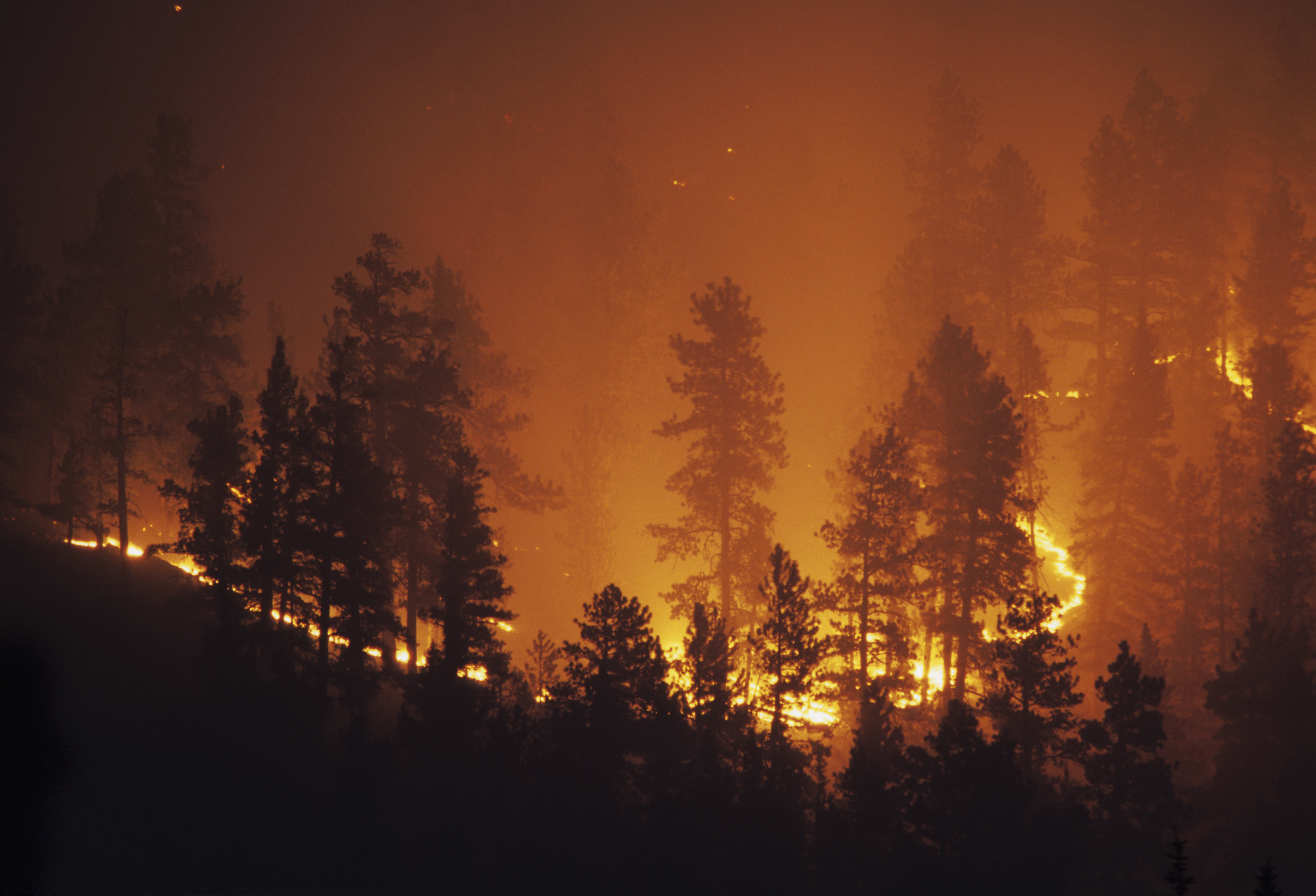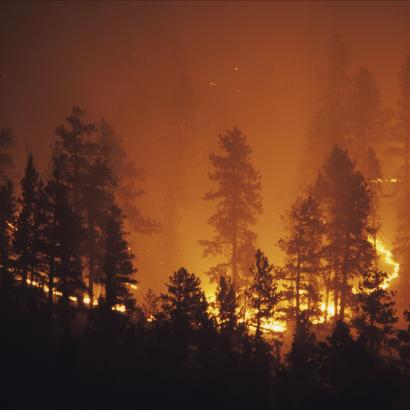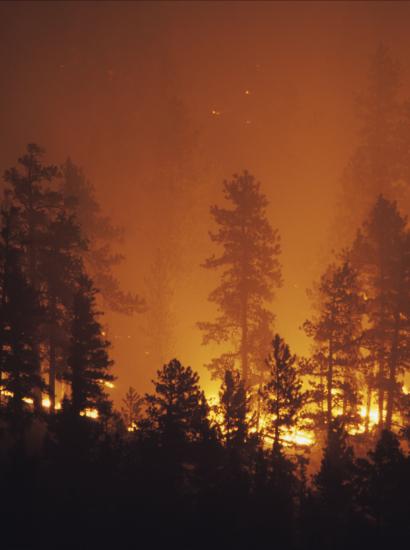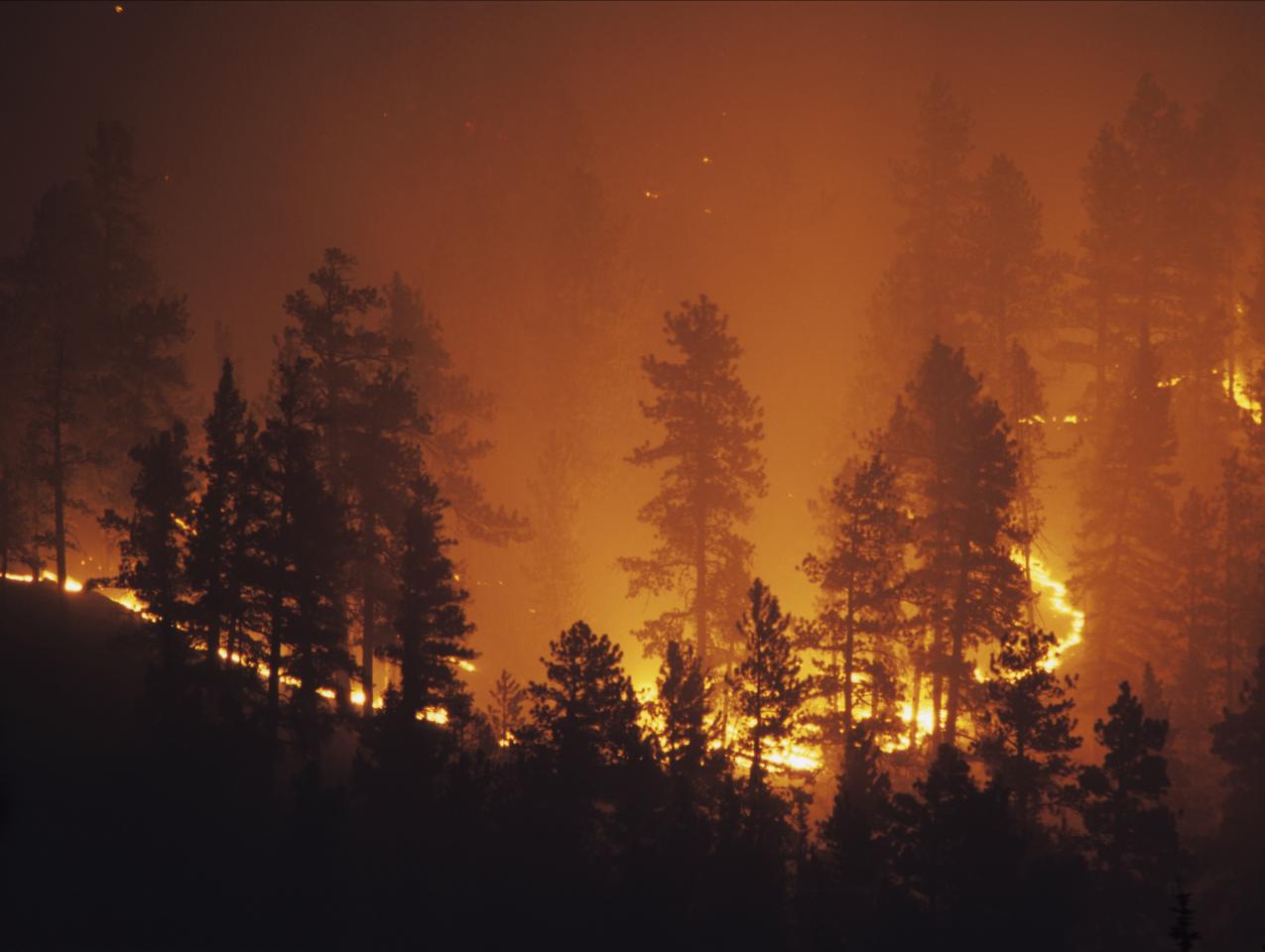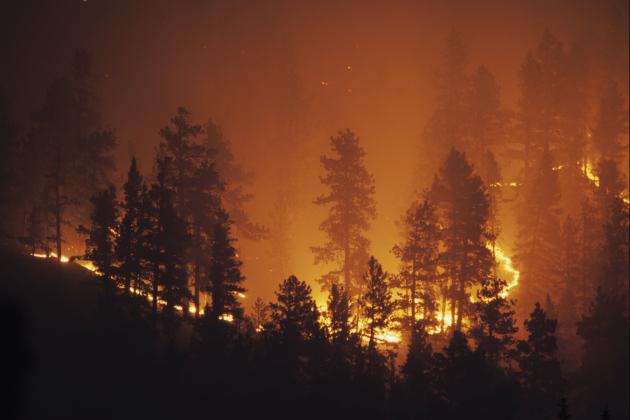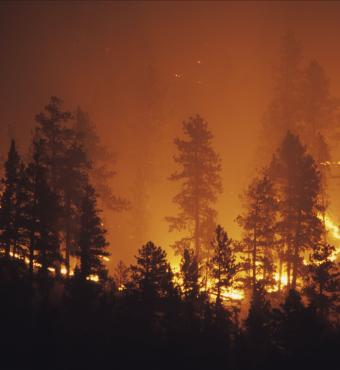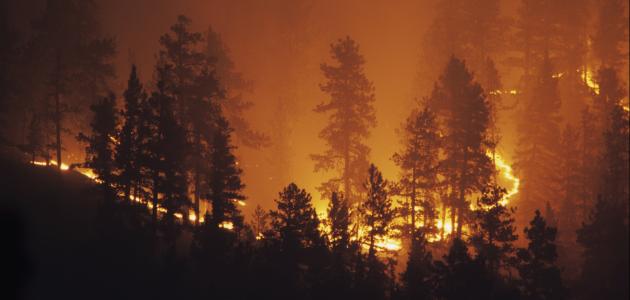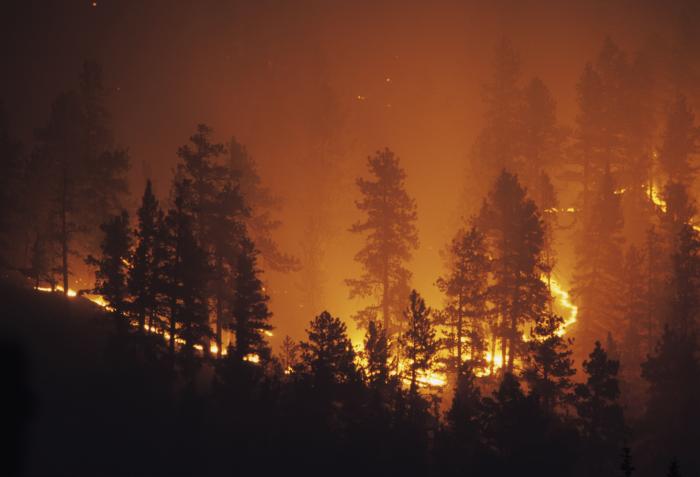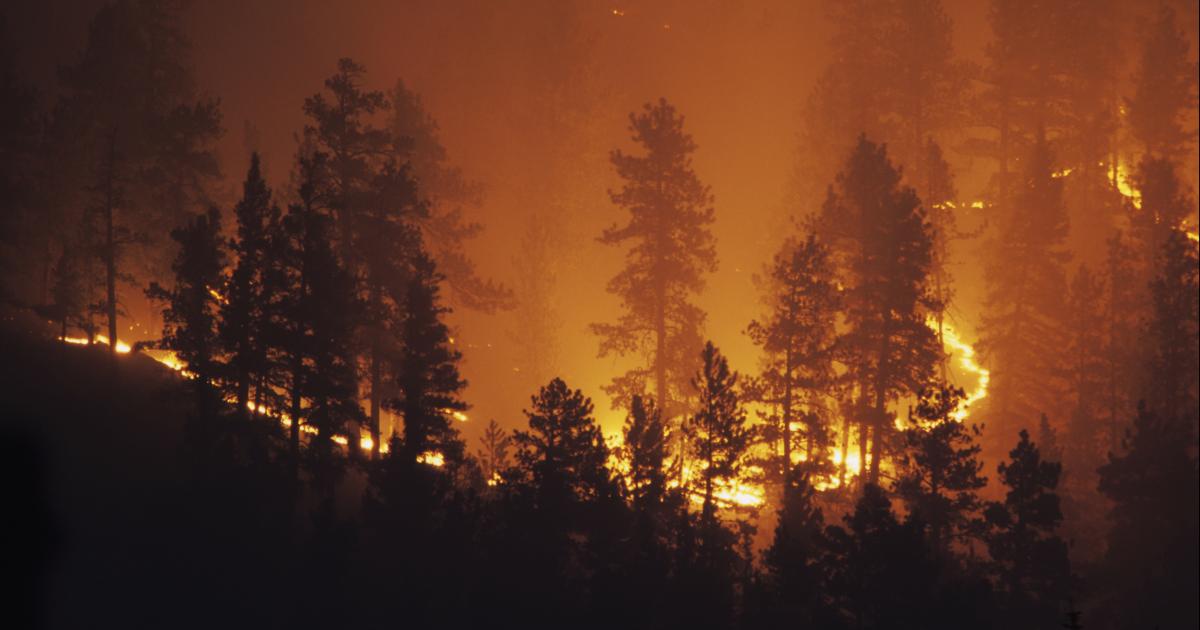- Politics, Institutions, and Public Opinion
- State & Local
- California
Where many parts of the United States enjoy four seasons, California experiences only two: wet and dry. It rains in the winter and fall (at least, it’s supposed to). Springtime and summers are predominately arid.
Another way to view the Golden State’s climate: through the prism of natural disasters. Wet winter weather makes for flash floods and mudslides, such as January’s tragedy in Montecito. The dry season brings with it horrific wildfires. Indeed, as July gave way to August, California’s fires were all the news rage. As of this week, 14,000 firefighters (including inmate volunteers) are combatting eighteen major blazes statewide (here’s a map).
The Mendocino Fire Complex— two fires spanning the Clear Lake region of Northern California, about 150 miles north of San Francisco— is now the largest conflagration in state history (at 283,000 acres, about half the size of Rhode Island).
It marked a sad continuation from 2017, when a total of 9,133 fires scorched more than 1.38 million acres, per California’s Department of Forestry and Fire Protection.
Here are a few things to consider when discussing California’s latest struggle with wildfires its effect on the political and policy landscape.
The (Un)Natural Climate. Here’s a list of the most destructive wildfires in the Golden State dating back to 1923. What stands out: four of the worst seven and seven of the worst dozen all occurred in the past three years (leading the way: last year’s Tubbs Fire that laid waste to great portions of Sonoma County). What’s making California’s fires more horrific? Start by checking your thermometer.
The Carr Fire that’s raged across Shasta and Trinity County in Northern California peaked during the hottest July on record in the city of Redding (at the same time, California’s Death Valley endured the hottest month in the planet’s record history). Coupled with a dry winter, it’s meant exceptionally dry soil and tinder-like vegetation— literally fuel for the fire. And, ominously for those who risk their lives as first-responders, a new type of wildfire to be combatted—infernos that “break the rules” by burning downhill almost as fast as they normally burn uphill.
In the May edition of the Hoover Institution’s Eureka web channel, Hoover research fellow Alice Hill co-authored a thoughtful yet eerily predictive essay on “the new normal” that is California’s increasing wildfire risk. Her assessment: “While no single wildfire can be attributed solely to climate change, new extremes precipitated by the earth’s changing climate are contributing to more frequent and aggressive fires.”
The political left and right will continue to bicker over the science behind climate change. Meanwhile, California’s yo-yo weather patterns— over the past three years, extremes of drought, rain and heat— speak to a peril that is real and worsening.
The Political Climate. If there’s any silver lining to California’s wildfires, it would be that the catastrophes make for the rare instance of cooperation between the federal government in Washington and the state government in Sacramento. Like rains dowsing fires, it’s a welcome break in the weather.
On the final Friday in July, California Gov. Jerry Brown sent a letter of request to the Trump Administration asking for an emergency declaration for besieged Shasta County. A day later, the Department of Homeland Security announced than President Trump had signed a declaration making federal emergency aid available.
This is hardly the “new normal” in California, whose government has sued the Trump Administration 38 times over the past 18 months (everything from the environment and immigration to healthcare guarantees and transgender risk). Sadly, well after the wildfires are put out, this political blaze will continue.
Another oddity: Gov. Brown’s disaster management style. Most politicians can’t resist the magnetic lure of on-the-scene cameras; Brown prefers to stay put in Sacramento. Earlier this year, facing the prospect of a diluvial collapse of Northern California’s Oroville Dam, Brown refused to make the journey north (which he later did). As the governor told reporters at the time: “I don’t think they need politicians fluttering around. This is not law. This is not politics. This is not what I’m used to.”
Brown did visit Shasta County and fire-ravaged Redding last weekend. Again, he called on the Trump Administration to declare a major disaster so as to start sending federal aid West. Again, the White House cooperated (although the good will soon vanished after a confusing presidential tweet on fires, water, and what ails California’s environment).
Burning Through Money. July is the first month of California’s fiscal year. At the month’s end, the state had already spent about one-fourth of its fire emergency budget for the entire year.
California set aside $442.8 million to battle fires from now through next June. The good news: if the state runs out of cash, there’s a $2 billion budget reserve waiting to be tapped.
However, when it comes time in 2019 to draft the next state budget, there may be an argument over this word: prepositioning. Firefighters say it’s the best way to wrestle climate-driven disasters— mobilize and deploy fire crews in high-risk areas before fires erupt. It also costs more money to do so. And if there’s one thing California’s State Legislature is loath to do, it’s setting aside money for hypotheticals as opposed to spending it in the here and now.
A second Sacramento controversy: mandating how utilities can be held liable for wildfires (PG&E equipment and power lines are at the heart of last fall’s wildfires).California’s three investor-owned utilities, citing the threat of bankruptcy, want the state to do away with inverse condemnation (i.e., being held liable for damages if their equipment started a fire even if they acted safely). Gov. Brown’s indicated he’s sympathetic to the utilities’ argument, suggesting courts take into count “the public benefit of the electrical infrastructure and if “the utility acted reasonably.” However, a State Legislature dominated by progressive Democrats rarely shows love for public utilities.
And there’s one more debate awaiting Sacramento: “WUI,” which is short for “wilderness urban interface. Last year’s Tubbs Fire in Sonoma County (California’s fabled Wine Country) spanned nearly 37,000 acres and claimed 5,636 structures. The second and third most destructive fires— 1991’s Tunnel Fire in the Oakland Hills and 2003’s Cedar Fire in San Diego County— claimed 5,700 structures over a stretch of 275,000 acres. Simply put, wildfires and human habitats increasingly collide.
This ties into one of the Gordian knots of California policy making: homebuilding. Housing policy is already a California nightmare. Is Sacramento capable of developing a sensible policy that (a) makes possible the construction of enough affordable homes for a growing population; (b) minimizes new development in disaster-prone areas; and (c) figures how to do so without sending insurance rates skyrocketing?
One thing learned from this year’s wildfires: so intense are the infernos that they create their own meteorological hell of thunderstorms and shifting winds. And so it might be in Sacramento— a lot of noise, a lot of bluster— if and when state lawmakers choose to seriously address California’s wildfire epidemic.
Editor’s Note: California on Your Mind is a new biweekly journal from the Hoover Institution about California politics, California policies, and the California economy.







